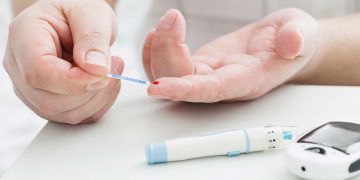Juvenile diabetes symptoms normally affect children. Another name for the symptoms of juvenile diabetes is type 1 diabetes mellitus. According to the Juvenile Diabetes Research Foundation International (JDRFI) this type of diabetes is the leading cause of kidney failure, adult blindness, stroke, heart attack, and nerve damage leading to amputation. One in fourteen type 1 diabetics are children.
This disease destroys the beta cells in the pancreas that produces insulin. The scary thing about this chronic disease is that the symptoms occur very quickly. Children at this early age are known for having minor childhood illnesses. These minor complications may be confused with the symptoms of juvenile diabetes. These juvenile diabetes symptoms may be experienced by your child:
- Your child may start urinating frequently. You might be looking at it innocently thinking that it is because they are very active.
- Your child may display extreme thirst and always want juice to drink. If you think your child is drinking in excess of what they normally drink then you should check it out with their physician especially if it is combined with other symptoms.
- Your child best friend is now the fridge and they complained about being hungry all the time and crave snacks especially sweet snacks like cake.
- Your child may complain to you that their vision is blurred. This should not be taken lightly as it is one of the main signs of juvenile diabetes.
- Your child may become very irritable refuse to play or be around anyone.
- Your child may start vomiting and complain of giddiness or nausea. If this happens it is an emergency as it represents diabetic ketoacidosis and needs medical attention immediately.
- Your child may lose weight even while drinking and eating all that food.
- Your child may complain of being tired or fatigue. They may even refuse to play and feel sleepy all the time.
- Your child may even fall into a coma. This situation is life threatening and needs immediate medical care. The longer the child remains in a coma the greater the risk of brain damage or even death.
The problem is that type 1 diabetes may not even be a suspect since you may not have a family history of diabetes. This is what makes it so difficult – because you would not be expecting it to be diabetes. Especially since the symptoms are not very different from any other normal childhood conditions. Which child is not always hungry and want to raid the ice-cream in the fridge. Even the serious conditions of nausea and vomiting could be misdiagnosed as flu. Irritability may just be because they are not feeling well.
There are other more subtle juvenile diabetes symptoms. These other symptoms of juvenile diabetes include:
- Vaginal itching – The older girls may experience vaginal itching.
- Acetone breath – Your breath may have a fruity odour, smell of acetone.
If these symptoms of juvenile diabetes go untreated it will lead to severe diabetics complications with diabetic ketoacidosis being the starting point. Diabetic ketoacidosis (DKA) is a serious condition in which the body receives little or no insulin. This results in energy being produced by the breakdown of fat. Whenever the body burns fat for energy the by product of this process are ketones. This excess ketones cause the blood to be acidic which could lead to diabetic coma.
If you notice these signs of juvenile diabetes visit your health care team. They will confirm whether or not it is diabetes mellitus. A diagnosis can be made by blood tests to check the level of glucose in the blood. A urine test will also be done to measure the level of ketones in the urine. The diabetic tests are the only sure way to diagnosed diabetes. The earlier you visit your medical team after these symptoms the better. The earlier treatment is started the less the damage to your body.
If your child is diagnosed with diabetes then there are lots of help available today to manage the disease. No cure as yet!












